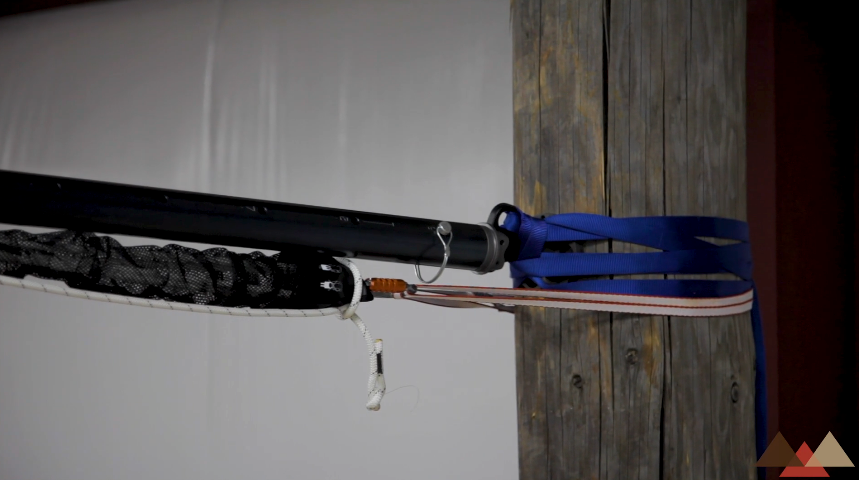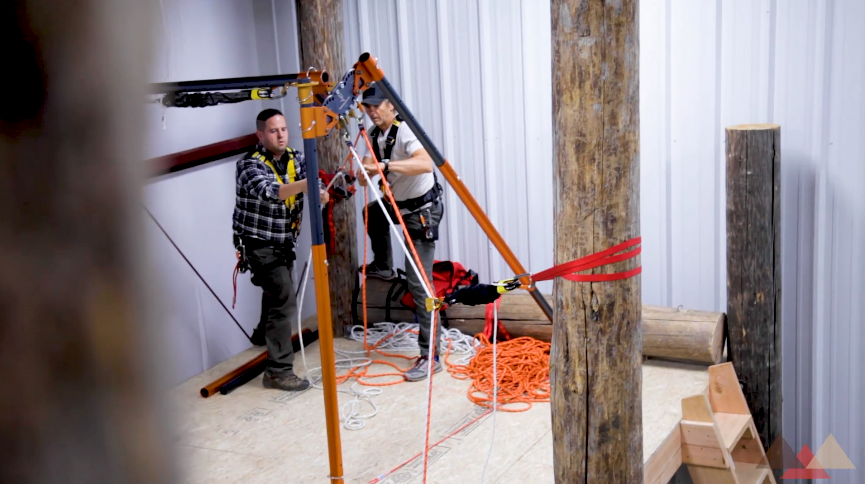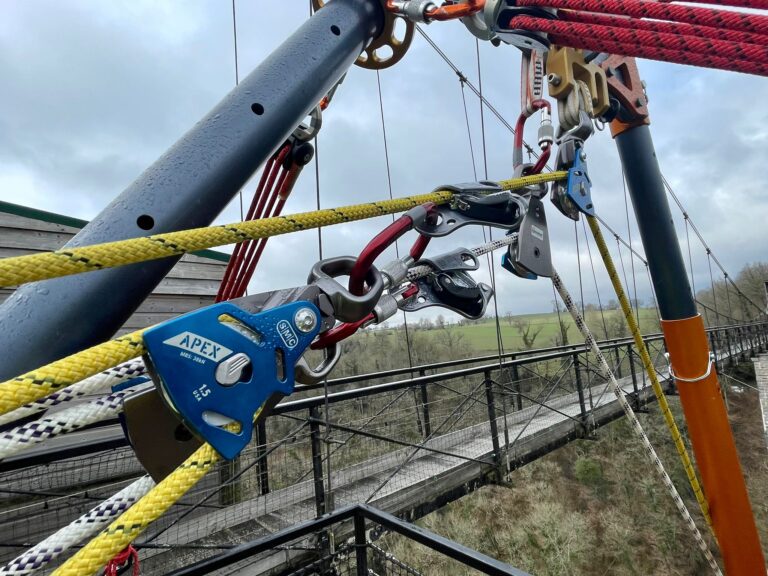Anti-gravity (also known as non-gravitational field) is a hypothetical phenomenon of creating a place or object that is free from the force of gravity. I love the word, hypothetical! – Very non-committal. You can play in a sandbox of “theory” and never be wrong. However, the other side of theory is a “proving ground”. So is “anti-gravity” moving in reverse such as reverse-entropy? Or is it completely removed from forces of any element and considered a stand-alone? I will leave this for you to figure out.
How about a Sideways A-Frame AHD using the TerrAdaptor and the central figure in the story? (Taken from our A Guide to Artificial High Directionals & Two Tension Rope Systems online course… )
Sideways A-Frame Version 1
With this system, we stuck with our two tension concept meaning that we still have a two tension lowering system and raising system through two MPDs sitting right next to each other on a bombproof anchor. We decided to put our rescue dummy in a basket and test the two tension system with the basket.

The main highlight of this video tutorial is the frame that we elected to use. As opposed to what we had done earlier with the Vortex as an easel frame, we basically took the TerrAdaptor and an easel frame and turned it 90 degrees sideways. This is something that’s really beneficial if you have big anchors (like the logs at the edge of a cliff face as shown in our video.) In an industrial setting, they could be steel I-Beams. The point is, if you’ve got big anchors right at your edge, this is a solid setup to have in place. But why, do you ask?

Well, the reason being is that you’re not working within the constraints of three legs like you would be with a standard easel A-frame. In our example, we took the third leg and elevated it up on a log right at the edge. We then latched it to the log so the leg and the foot were able to stay in place and we then sucked it in with a Jag system. This could be done with any sort of tensioning method but we elected to use a Jag system because it compresses the leg into the log and also rigs it to be able to be compressed or pulled against. So, it’s rigged for tension and compression.

We also have a massive footprint which is very accommodating for the resulting force generated by our directional pulleys at the head of our TerrAdaptor. The other thing you’ll notice with our directional pulleys is that we put them on the front leg, all the way up top on the lash ring that the TerradAptor comes with. We do this because our main anchor — where our rope departs from through our MPDs — is really close to the back leg of our TerrAdaptor. By elevating our directional pulleys, we’re able to get a little bit more throw out of it. Doing this also clears up the interior space of the TerradAptor on the head, which can become valuable real estate as operations continue to progress and advance.
For More on this … A Guide to Artificial High Directionals & Two Tension Rope Systems
Sideways A-Fame Version 2
In this next video tutorial, the only difference between this operation and the last one we did with the sideways easel frame was that we’ve changed the way that our ropes are running through the frame. This is more of a demonstration to help you conceptualize things and be able to understand different ways that you can load the same frame.

To begin, we changed the location of our main anchor from directly inline with the back leg of our frame and then also moved it significantly over so that the ropes now run directly through the middle of the A that’s formed by the easel frame.

This is okay because this leg that we’ve elevated, the sideways part of our easel frame, has allowed our entire set up to be a footprint. This means that the entire area between the three legs is able to accept the compression resulting from the resultant force of our directional pulleys.

Because we’re not running our ropes directly from the back leg inline and out the front and we’re running perpendicular through our frame, the frame is still stable because it’s accepting compression through this massive footprint that we’ve created.
For More on this … A Guide to Artificial High Directionals & Two Tension Rope Systems
- CMC MPD
- Petzl Axis 11mm Rope
- TerrAdaptor (Artificial High Directional) Portable Anchor System
- Cascade Rescue Professional Series Stainless Tapered Litter
- Petzl Jag System
- Petzl AVAO BOD Full Body Harness
- Petzl Am’D Carabiner
- Petzl RESCUE Pulley
- SMC Apex Swivel Pulley
Peace on your Days
Lance









